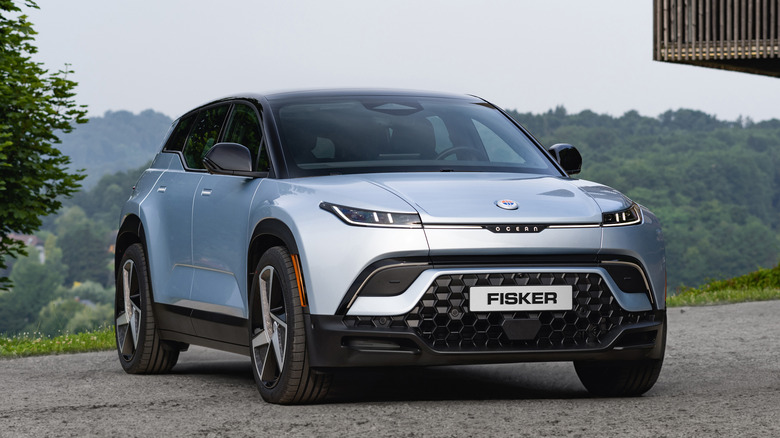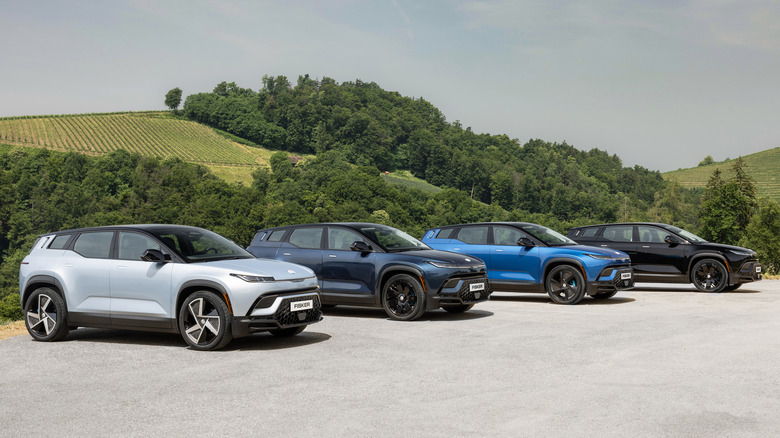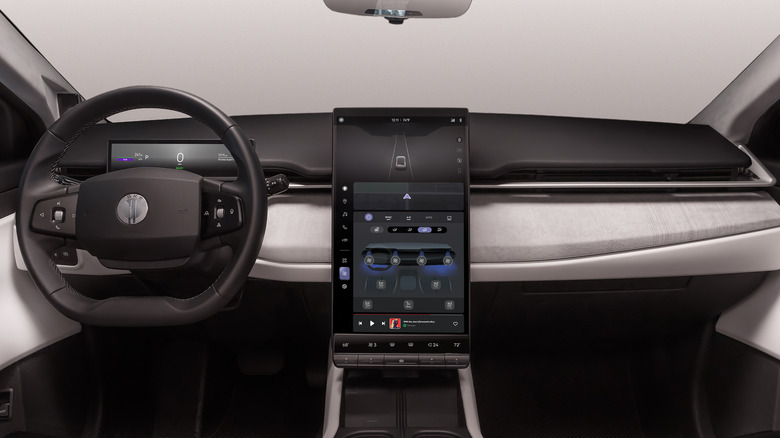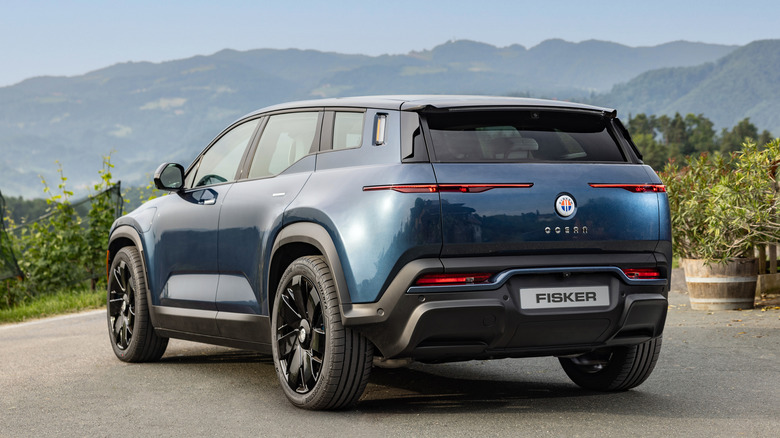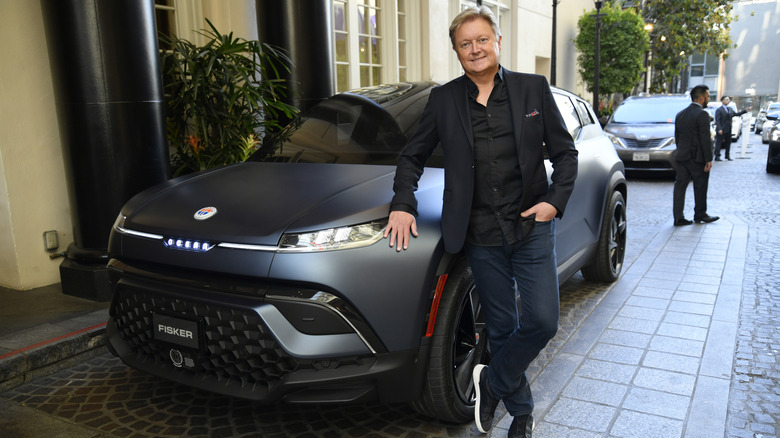Why Fisker's Ocean Is A Make Or Break Moment For The EV Company
Making cars is really difficult. Remember the stories of Elon Musk sleeping on the floor of the Tesla factory when it felt like the Model 3's production line would crash and burn? Also look at how long it took startups Rivian and Lucid to put cars into production, and how legacy giants like Toyota have been slow to bring their first EVs to market. Fisker's backstory is arguably more fraught than most, especially when you look at its eponymous founder, Henrik Fisker.
Before he put his own name on the badge, the Danish designer was best known for working on the BMW Z8 and Aston Martin V8 Vantage. Then came the 2007 launch of his own company Fisker Automotive, and its first car — the 2011 Karma — a $100,000 hybrid sports sedan with killer looks and technology ahead of its time.
Fast-forward to 2012 and, just a year after deliveries began, production was halted due to the bankruptcy of Fisker's sole battery supplier which had come after two battery recalls. Fisker Automotive, which lost 300 Karmas to Hurricane Sandy and reportedly made a $35,000 loss on every car it sold, filed for bankruptcy in late 2013.
Now, Henrik is back. Fisker Inc launched in 2016 and its first car — a small electric SUV called the Ocean — is now in production. Second chances are rare in the high-stakes world of car production, making the Ocean a make-or-break moment for Fisker.
What is the Fisker Ocean?
While it's one of many small electric SUVs on the market, the sharp-suited design and Europe-friendly proportions from the Ocean are exactly what you'd expect from the Danish designer. So, too, are the Ocean's surprise-and-delight features, like how the 17-inch dashboard display rotates from portrait to landscape, so occupants can enjoy movies and TV shows while parked at a charging station.
Then there's "California mode," where a press of one button opens every side window and even the rear windshield to create the closest thing to a convertible SUV since the Range Rover Evoque. The roof doesn't fold down, however, because it features an integrated solar panel that Fisker says can contribute up to 1,500 miles' worth of free driving per year — providing you live in a sunny climate, of course.
Priced from $37,499, and topping out at $68,999, the Ocean has a claimed range of between 250 and 360 miles depending on specification. Maximum power output is 564 horsepower, and it can accelerate to 60 mph in as little as 3.7 seconds. The battery can fill at up to 200 kW when plugged into a DC rapid charger.
Sustainable, with a recycled interior
Like a lot of electric cars built today, Fisker says the Ocean is sustainably built using a range of recycled materials. It goes so far as to say the Ocean has a lighter carbon footprint than the Polestar 2 and Volvo XC40 Recharge. The Ocean contains more than 110 pounds of recycled material, Fisker says in its sustainability assessment, including fabrics made from recycled sea plastics and interior panels that are unpainted and uncoated. Fisker says this makes them easier to make and recycle, while giving the cabin a clean and simple aesthetic.
Vehicle-to-load (V2L) technology means the Ocean can be used as a giant power bank as well. Fisker says the car and its battery can power an average home for up to seven days during a power cut, assuming your power usage is cut by 50 percent to deal with an emergency. It can also give a battery top-up to other electric cars, or power domestic appliances and other large electrical devices, just like the Ford F-150 Lightning.
Make-or-break moment
So far, so good, but will the Ocean be a success? Early reviews are full of praise, but the first cars are only just starting to arrive with their owners. Fisker is going for a slow and steady start, and plans to ramp up production slowly over the next year — and here's the kicker; Fisker doesn't make the Ocean itself.
Instead, it has employed the services of Magna Steyr, an Austrian firm that assembles cars for other auto companies. It is perhaps most famous for building half a million examples of the Mercedes G-Class, but also currently assembles the Toyota Supra and BMW Z4. The Ocean is built on a production line that previously churned out the BMW 530e.
This delegation means Fisker doesn't need to purchase and run its own production line or manage an entire supply chain. Such an approach makes things simpler and potentially more cost effective for Fisker, which says its production costs are the same for vehicle one as they will be for vehicle 40,000, which is due to leave the Magna line in the coming few months.
As Bloomberg explained in late-2022: "Fisker won't bear the expense of an underutilized factory for the first few quarters that Ocean is in production. Those costs have dragged on Lucid and Rivian's earnings results, with both registering steep quarterly losses."
Avoiding failure for a second time
That isn't to say Fisker 2.0 has been a smooth ride. Henrik, pictured above — and his wife and co-founder Geeta Gupta-Fisker — stopped collecting cash compensation from their company and furloughed employees just before Covid-19 was declared a pandemic in March 2020.
Just a few months later, in July 2020, Fisker Inc announced plans to float on the New York Stock Exchange through a merger with Apollo Global Management. This lined Fisker's pockets with $1 billion, giving it enough cash to see the Ocean through to production and valuing the company at $3 billion.
As well as paying Magna to set up a supply chain and production line — not easy for startups acting alone during a pandemic — the cash injection was used to pay upfront for a dedicated battery cell production line at Chinese battery manufacturer CATL.
Fisker has over 53,000 Ocean preorders to fulfill, with plans for the majority to be built and delivered before the end of 2023. After that, Fisker has already announced plans for a small city EV called the Pear, a truck called Alaska and a $385,000 sports car called the Ronin. Manage all that without significant delays or debt, and Henrik Fisker could finally be on the road to redemption.
